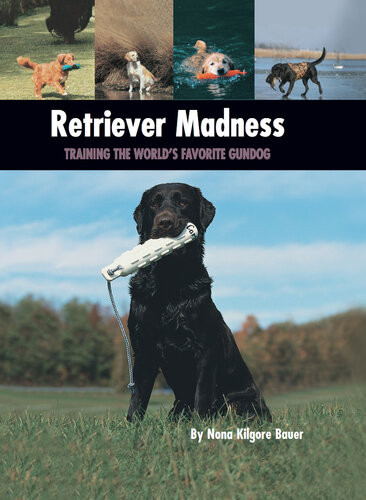

Most ebook files are in PDF format, so you can easily read them using various software such as Foxit Reader or directly on the Google Chrome browser.
Some ebook files are released by publishers in other formats such as .awz, .mobi, .epub, .fb2, etc. You may need to install specific software to read these formats on mobile/PC, such as Calibre.
Please read the tutorial at this link: https://ebookbell.com/faq
We offer FREE conversion to the popular formats you request; however, this may take some time. Therefore, right after payment, please email us, and we will try to provide the service as quickly as possible.
For some exceptional file formats or broken links (if any), please refrain from opening any disputes. Instead, email us first, and we will try to assist within a maximum of 6 hours.
EbookBell Team

4.0
96 reviewsAuthor Nona Kilgore Bauer begins Retriever Madness with a chapter called Know Your Retrievers," and few know their retrievers like this expert author, trainer, and breeder. Bauer introduces the readers to the six retrievers recognized by the American Kennel Club, among them two of the most popular companion dogs in the world, the Labrador Retriever and the Golden Retriever, along with other superb overachievers: the Chesapeake Bay Retriever, Flat-Coated Retriever, Curly-Coated Retriever, and Nova Scotia Duck Tolling Retriever.
Geared toward readers who are interested in working with their retrievers in their bred-for capacity—hunting water fowl and upland game birds—Retriever Madness is the perfect primer to getting started in the field. The book offers advice on selecting a puppy with hunting potential, giving future owners insight on how to evaluate a puppy's birdiness, independence, prey drive, and personality. The chapter on bringing the puppy home gives recommendations for basic training equipment, including leashes, collars, dummies, whistles, starting pistol and the like.
Amateur retriever owners who hope to hunt with their dogs will find excellent advice for training for the puppy's first twenty weeks of life, the most critical period for training any puppy. In addition to the basic commands (sit, down, stay), the author also explains the release command, whistle commands, forward and backward heeling, and wait.
Four chapters are devoted to beginning field work, presenting diagrams and step-by-step instructions and covering such topics as puppy marks, throwing, water retrieves, steadying, force-fetching, marking, executing blind retrieves and more. The author offers remedies to commonly encountered problems in the field as well as a complete glossary of terminology that all readers will find helpful in understanding the lingo of the field retriever.